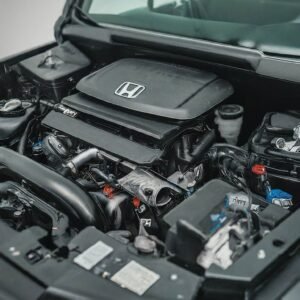The most common Kawasaki Mule 4010 problems are clutch issues, coil problems, starting issues, faulty fuel pump, power steering problems, shifting issues, ECU issues, engine problems, PTO issues, throttle problems, and brake issues.
Here, we explore these problems in detail with their easy solutions.
Kawasaki Mule 4010 Problems and Solutions
Now, we will explore the most common problems of the Kawasaki Mule UTV with their easy solutions. Also explore the problems of Kawasaki Mule 3010.
1. Clutch Problems
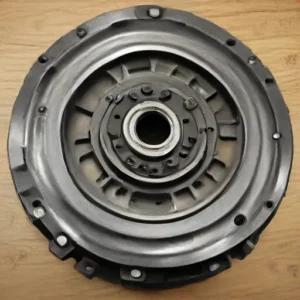
The clutch system in the Kawasaki Mule 4010 can experience various issues. Some of the most frequent problems include:
- Slipping Clutch: A slipping clutch often manifests as losing power when accelerating. Worn-out clutch plates or a misadjusted clutch cable can cause this.
- Clutch Noise: Unusual noises when engaging or disengaging the clutch could indicate a problem with the clutch bearings or itself.
- Stiff Clutch Pedal: If the clutch pedal feels unusually stiff, it might be due to a lack of lubrication or a problem with the clutch cable.
Solutions
Addressing clutch problems in the Kawasaki Mule 4010 requires a systematic approach. Here are some solutions to these common issues:
- Regular Maintenance: Regularly check and replace clutch plates if they show signs of wear. This can prevent slipping and ensure smooth operation.
- Lubrication: Ensure the clutch cable and other moving parts are well-lubricated to avoid stiffness and noise. Proper lubrication can significantly extend the lifespan of the clutch components.
- Adjustment: Frequently adjust the clutch cable to maintain optimal tension. A properly adjusted clutch cable can prevent common issues like slipping and hard pedals.
2. Coil Problems
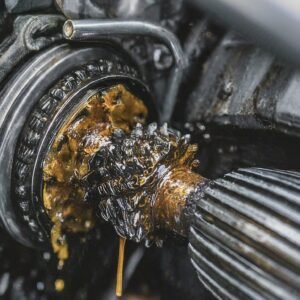
Coil issues in the Kawasaki Mule 4010 can manifest in several ways. You may notice difficulty starting the engine, misfiring, or a significant drop in power.
These symptoms are often caused by a faulty ignition coil, which converts the battery’s voltage to the high voltage needed to ignite the fuel.
Common Causes of Coil Problems
The ignition coil in your Kawasaki Mule 4010 may fail for several reasons. Overheating is a primary cause, often due to extended periods of operation in high temperatures or insufficient cooling.
Another common cause is wear and tear over time, mainly if the vehicle is frequently used in harsh conditions. Lastly, electrical issues such as faulty wiring or a bad connection can also lead to coil problems.
Solutions and Preventive Measures
If you suspect your Kawasaki Mule 4010 has coil problems, the first step is to check the ignition coil for signs of damage or wear. If the coil is damaged, it will need to be replaced.
Ensure that you use a high-quality replacement part to avoid recurring issues.
Regular maintenance is crucial to prevent future coil problems. Keep your vehicle clean and ensure proper ventilation to avoid overheating. Also, regularly inspect the wiring and connections for any wear or damage.
Additionally, avoid running the vehicle for extended periods in extreme temperatures when possible.
Also explore the problems of Kawasaki Mule SX
3. Kawasaki Mule 4010 Starting Problems

If you are experiencing starting problems with your Kawasaki Mule 4010, you are not alone. Many owners face similar issues, and understanding the common causes can help you troubleshoot effectively.
Common starting problems include battery, starter motor failures, and fuel system problems.
Battery Issues
The battery is often the first component to check when your Kawasaki Mule 4010 won’t start. Ensure the battery terminals are clean and secure.
A multimeter can help you verify the battery voltage; it should be around 12.6 volts when fully charged. If the voltage is low, you might need to recharge or replace the battery.
Starter Motor Failures
Another probable cause of starting issues could be the starter motor. Listen for a clicking noise when you turn the key. If you hear this noise, the starter motor might be faulty.
Inspect the starter solenoid and wiring for any visible damage or wear. Sometimes, a simple tap on the starter motor can temporarily resolve the issue, but a permanent fix might require professional repair or replacement.
Fuel System Problems
Another critical area to investigate is the fuel system. Check the fuel level and ensure there is no blockage in the fuel lines. A clogged fuel filter can prevent the engine from starting, but replacing the fuel filter regularly can help avoid this problem.
Additionally, inspect the fuel pump for proper operation. If it is malfunctioning, it will need to be replaced to restore proper fuel flow to the engine.
4. Faulty Fuel Pump
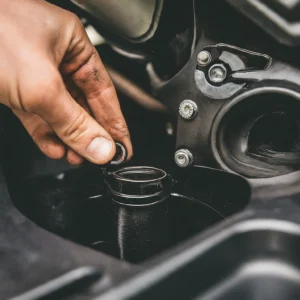
Several indicators can signal a failing fuel pump in your Kawasaki Mule 4010. Some of the most common symptoms include:
- Engine Sputtering: If your engine sputters at high speeds, it could be due to insufficient fuel delivery.
- Starting Problems: Difficulty starting the engine or frequent stalling might suggest a faulty fuel pump.
- Loss of Power: A noticeable drop in power, significantly when climbing hills or carrying heavy loads, can signal fuel pump issues.
- Unusual Noise: A whining noise from the fuel tank area while the engine is running can indicate a problem.
Diagnosing and Fixing Fuel Pump Problems
When diagnosing fuel pump issues, following a systematic approach is crucial. Here are some steps to consider:
- Check the Fuel Filter. A clogged filter can mimic fuel pump problems. Make sure that it is clean and replace it if necessary.
- Test the Fuel Pressure: Use a fuel pressure gauge to measure the pressure in the fuel system. Compare the readings with the manufacturer’s specifications.
- Inspect the Electrical Connections: Loose or corroded connections can affect the fuel pump’s performance. Ensure all connections are secure and clean.
- Replace the Fuel Pump: If the above steps don’t resolve the issue, consider replacing the fuel pump. Ensure you use a genuine Kawasaki replacement part for optimal performance and longevity.
5. Power Steering Problems

One of the most frequent issues with the Kawasaki Mule 4010 is the power steering becoming stiff or unresponsive.
Various factors, including low power steering fluid levels, a malfunctioning power steering pump, or electrical issues within the system, can cause this.
Another common issue is unusual noise when turning the steering wheel, which may indicate a problem with the steering column or the electric motor.
Solutions
The first step in addressing power steering problems is checking fluid levels. Low fluid can cause the steering to become hard to turn.
If the fluid level is acceptable, the next step is to inspect the power steering pump. A faulty pump may need to be replaced to restore proper function.
Electrical issues can often be resolved by checking the fuses and wiring connections. If you hear unusual noises, lubricating the steering column and checking for loose components can help. Also explore the Kawasaki Mule Pro MX Problems.
6. Kawasaki Mule 4010 Shifting Problems

One of the main issues with the Kawasaki Mule 4010 is the difficulty in shifting gears. This can manifest as hard turning, grinding, or the inability to shift into certain gears. These issues can stem from several causes, including:
- Worn or damaged shift cables
- Improperly adjusted shift linkage
- Transmission fluid problems
- Clutch issues
Solutions to Shifting Problems
Now, let’s explore some practical solutions:
Inspect and Replace Shift Cables
Worn or stretched shift cables can cause hard shifting. Inspect the wires for any signs of wear, fraying, or stretching. If they appear damaged, replacing the wires can often resolve the issue.
Adjust Shift Linkage
Improperly adjusted shift linkage can prevent the gears from engaging correctly. Consult the owner’s manual for the correct adjustment procedure. Proper alignment can significantly improve shifting performance.
Check Transmission Fluid
Low or dirty transmission fluid can also cause shifting problems. Ensure the fluid is at the appropriate level and replace it if it appears dirty or contaminated. Using the correct type of transmission fluid recommended by Kawasaki is essential.
Examine the Clutch
A worn or misadjusted clutch can hinder shifting if your Mule 4010 has a manual transmission. Inspect the clutch for wear and adjust or replace it as necessary. A properly functioning clutch is vital for smooth gear changes.
7. ECU Problems in Kawasaki Mule 4010
The ECU in the Kawasaki Mule 4010 is responsible for managing various engine functions. Common problems include:
- Engine Misfires: This can occur due to faulty ECU signals, causing the engine to run inefficiently.
- Starting Issues: If the ECU malfunctions, the vehicle may have difficulty starting or fail to start altogether.
- Check Engine Light: An illuminated check engine light often indicates an ECU issue that needs addressing.
Solutions to ECU Problems
Addressing ECU problems in the Kawasaki Mule 4010 can be straightforward if you know what to look for. Here are some solutions:
- Regular Maintenance: Keep up with regular maintenance to prevent ECU issues. Check wiring and connections regularly.
- Software Updates: Ensure your ECU software is up-to-date. Manufacturers often release updates to fix problems and make things work better.
- Professional Diagnosis: If you’re unsure about the problem, it’s best to consult a professional mechanic who can use diagnostic tools to identify and fix the issue accurately.
8. Engine Problems
Owning a Kawasaki Mule 4010 can be a rewarding experience, but like any vehicle, it can encounter engine problems. In this blog post, I will discuss common issues and provide practical solutions, ensuring you can confidently address any challenges.
Starting Issues
One of the most common problems with the Kawasaki Mule 4010 engine is difficulty starting. This issue can be attributed to several factors, such as a weak battery, faulty starter motor, or clogged fuel lines.
To resolve this, check the battery voltage; it should be around 12.6 volts when fully charged. If the battery is fine, inspect the starter motor and fuel lines for any signs of wear or blockage.
Overheating
Overheating can be a significant concern for Kawasaki Mule 4010 owners. This often occurs due to a malfunctioning cooling system or low coolant levels. Check the coolant level regularly and add more if needed.
Additionally, ensure the radiator and cooling fan are clean and functioning correctly. If overheating persists, replacing the thermostat and water pump may also be required.
Power Loss
Experiencing power loss while operating your Kawasaki Mule 4010 can be frustrating. This issue is commonly linked to dirty air filters, fuel filters, or spark plugs.
Regular maintenance is crucial; clean or replace air and fuel filters periodically and inspect the spark plugs for any signs of damage or wear. Using high-quality fuel can also help improve engine performance.
Unusual Noises
Unusual engine noises can indicate underlying problems. These noises might result from loose components, worn-out belts, or low oil levels.
Conduct a thorough engine bay inspection to identify any loose or damaged parts. Regularly check and change the engine oil to ensure proper lubrication and minimize noise.
9. PTO Problems
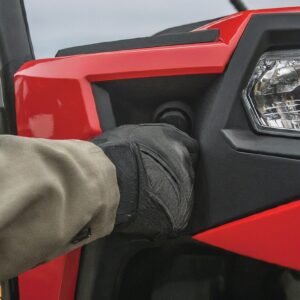
One of the frequent issues with the Kawasaki Mule 4010’s PTO system is the failure to engage or disengage properly. This can be due to various reasons, such as electrical faults, mechanical wear, or hydraulic issues.
Another common problem is unusual noises coming from the PTO, which might indicate worn-out components or lack of lubrication.
Diagnosing PTO Problems
Check the electrical connections to diagnose PTO problems in your Kawasaki Mule 4010. Ensure all wires are intact and free of corrosion.
Next, inspect the hydraulic fluid levels and look for any leaks. Listen for unusual sounds while the PTO is operating, as this can help identify specific issues like gear wear or bearing failure.
Solutions for PTO Issues
For electrical issues, cleaning and tightening the connections often resolve the problem. If the PTO fails to engage due to hydraulic issues, consider replacing the fluid and checking for leaks.
Regular maintenance, such as lubricating moving parts and replacing worn components, can prevent many common issues.
Replacing the PTO clutch or other significant components might be necessary in severe cases.
Always refer to the Kawasaki Mule 4010’s manual for guidance, and consider seeking professional assistance if you’re unsure about the repairs.
10. Throttle Body Problems
Throttle body problems in the Kawasaki Mule 4010 can manifest in several ways. You might notice poor engine performance, stalling, or difficulty starting.
These issues often stem from a dirty or faulty throttle body. Accumulated dirt and debris can obstruct the airflow, leading to inefficient fuel combustion.
Additionally, electronic components within the throttle body can fail over time, causing similar symptoms.
Diagnosing Throttle Body Issues
Diagnosing throttle body problems involves a few steps. First, inspect the throttle body for visible dirt or damage. Next, use an OBD-II scanner to check for error codes.
Standard codes like P0120 (Throttle Position Sensor/Switch A Circuit Malfunction) indicate issues with the throttle body. Listening to the engine for irregular sounds can also provide clues.
Solutions
Once you’ve found the problem, it’s time to fix it. Cleaning the throttle body is often the first step. Please remove it from the engine and use a throttle body cleaner to remove dirt and debris.
If the problem persists, you might need to replace the throttle body or its electronic components. Always consult the Kawasaki Mule 4010’s manual for specific instructions and torque settings.
11. Kawasaki Mule 4010 Brake Problems

Kawasaki Mule 4010 owners frequently report brake issues, including spongy brakes, unusual noises, and decreased braking efficiency. Spongy brakes can be caused by air in the brake lines, while noises like squealing or grinding often indicate worn-out brake pads or rotors.
A noticeable decrease in braking efficiency can also be due to contaminated brake fluid or worn-out components.
Diagnosing the Problems
Diagnosing these issues requires a systematic approach. Start by checking the brake fluid level and its condition. Low or dirty brake fluid can affect braking performance.
Inspect the brake pads and rotors for signs of wear. If you notice uneven wear or thinning, it’s time for a replacement.
Also, ensure no leaks in the brake lines, as these can introduce air into the system, leading to spongy brakes.
Effective Solutions
Addressing these problems involves several steps. For spongy brakes, bleeding the brake lines to remove air is crucial. If brake fluid is contaminated, a complete flush and replacement are recommended.
Worn-out brake pads and rotors should be replaced with quality parts. Regular maintenance, such as checking and topping up brake fluid and periodic inspections of brake components, can prevent many of these issues.
Conclusion:
By following this guide, you can easily eliminate the Kawasaki Mule 4010 problems because I have provided the complete details about it.
